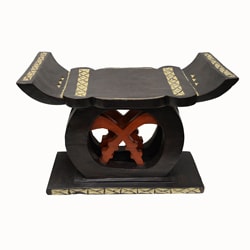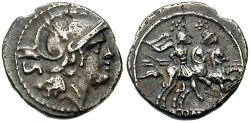Igenius laid the small carving down on the table glinting blue and green in the sunlight. 
The old lady on the other side, quietly studied it for a moment, then picked it up with a pair of wooden rods and turned it over without, he noticed, ever touching it with her fingers.
"And how did you feel when you first picked it up?"
"Warm", Igenius responded, "like I'd just come into my mothers kitchen on a winter's day."
"Ah, it appears to be an amulet of the goddess Hathor, mother and protector. It will be of use to you in your delvings, more would require me to cast a spell and you to provide me with means and further payment for my efforts."
These small carvings were once common in Egypt, their protective properties have scattered them across the multiverse. Consisting of a small image of a woman in a headdress, with long hair and cows ears, they provide protection against magic and disease to the wearer.
The material of the amulet is a sure guide to it's strength. The most common are made of ceramic, usually with a faience glaze or copper. When worn these provide +1 on saves vs magic or disease.
The next types are carved from semi-precious stones or made of silver, they provide +2 protection when worn.
Gold amulets are rare, but those who wear them receive a +3 bonus to their saves vs magic and disease.
Rarest of all are the ones carved from precious gems, which provide a +4 bonus on saves vs magic and make the wearer immune to disease
Hathor is a goddess of destruction as well as protection. 1 in 20 of these reflect the other side of her nature and act like a Sword of Cursed Berserking! In each combat the wearer must save vs magic or go on an unstoppable rampage until slain, knocked unconscious or dead. The only way to remove one of these cursed scarabs is for the wearer to imbibe a flagon of mixed blood and milk.
Inspiration from Dominic Perry's History of Egypt Podcast It's well worth a listen.










